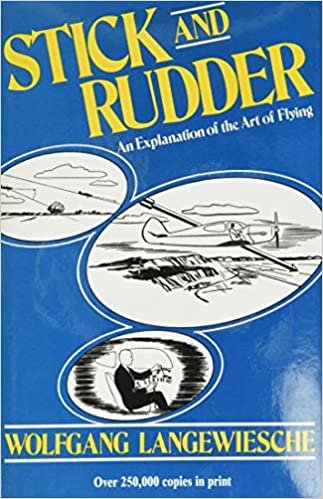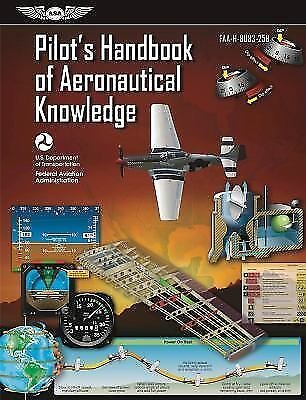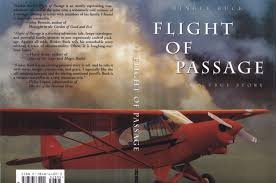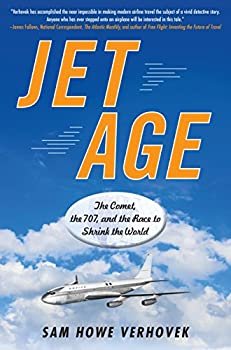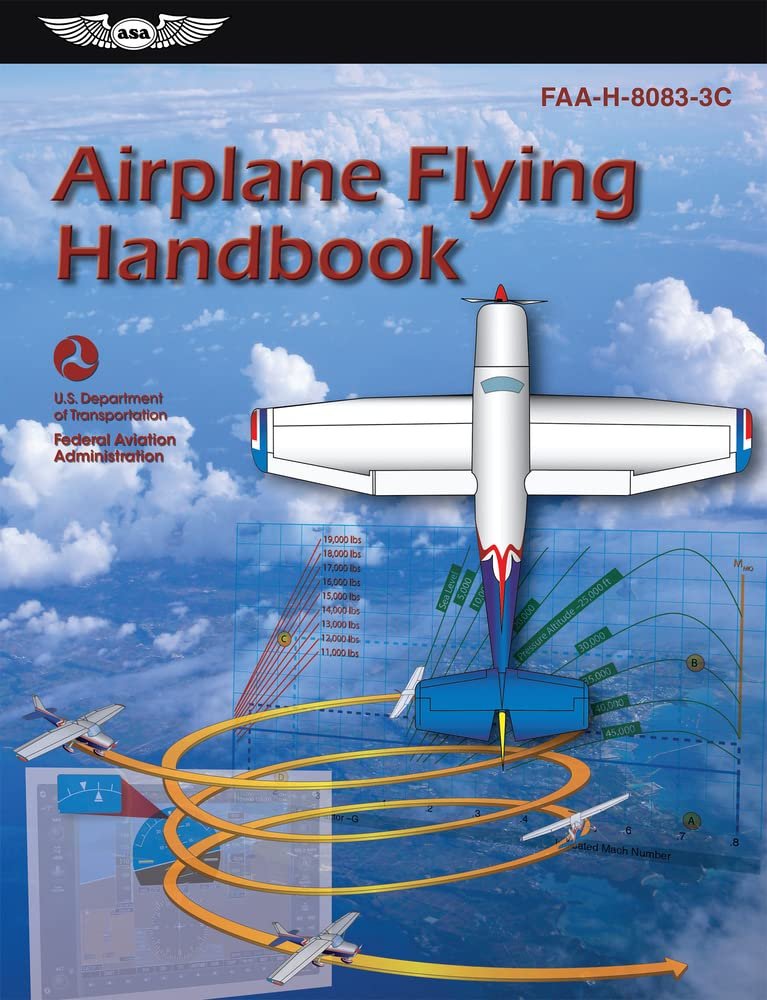Must Read Aviation Books
The Top 10 Books Every Pilot Should Read:
Stick And Rudder
Everything Explained
FARAIM
“WE”
PHAK
The Turbine Pilot’s Flight Manual
Flight of Passage: A Memoir
Jet Age: The Comet, the 707, and the Race to Shrink the World
AFH
Flight: The Complete History of Aviation
#1 Stick and Rudder - An Explanation of the Art of Flying
This bright blue classic will deepen your understanding of the basics. It’s easy to mindlessly accept that some phenomena are true, but this book explains the “why”.
From the back cover:
“ - but the word “lift” suggests to many pilots (wrongly) a force that always acts straight up. Actually, what engineers call lift does not necessarily act straight up.”
“It acts at right angles to the Relative Wind and hence may act up or down or sideways or slightly forward - depending on the direction from which the relative wind strikes the airplane, and on the airplanes attitude.”
This book covers everything from lift to landing and is a great choice if you are struggling to grasp the basics or just want a deeper understanding so that you can feel confident on the topics.
#2 Everything Explained for the Professional Pilot
Have you ever asked your Flight Instructor a question and they didn’t know the answer? Chances are the answer is in this book! The format is just like the cover so get ready for a unique approach to dumbing down the legal, meteorological, and engineering jargon.
The book focuses on topics like airspace, regulations, weather, and a TON of miscellaneous information.. seriously so much!
On the back cover there is a warning from the author:
“I dare you… no I DOUBLE-DARE you… to browse through this book without buying it. It can’t be done :-)”
#3 FARAIM - Federal Aviation Regulations & Aeronautical Information Manual
For pilots, this book is considered the “Bible of Aviation”. The FAA releases an updated copy every year, so you might want to replace that 2017 FARAIM if you’re still using it!
The FARAIM contains information from how to obtain pilot certificates, to the rules of the sky, to information about VOR’s. The book covers so much vital material that it is the source material to most of the other books on this list, it’s just a bit boring to read.
Here is an example of what to expect from the FARAIM:
“Additional training required for operating tailwheel airplanes.
(1) Except as provided in paragraph (i)(2) of this section, no person may act as pilot in command of a tailwheel airplane unless that person has received and logged flight training from an authorized instructor in a tailwheel airplane and received an endorsement in the person's logbook from an authorized instructor who found the person proficient in the operation of a tailwheel airplane. The flight training must include at least the following maneuvers and procedures:
(i) Normal and crosswind takeoffs and landings;
(ii) Wheel landings (unless the manufacturer has recommended against such landings); and
(iii) Go-around procedures.
(2) The training and endorsement required by paragraph (i)(1) of this section is not required if the person logged pilot-in-command time in a tailwheel airplane before April 15, 1991.”
**I would highly recommend looking in the front of the FARAIM, there is a page that tells you which regulations are applicable to each certificate. Theres a lot of fluff that won’t be applicable to your specific operation so taking a few minutes to tab these regulations will save you loads of time!**
#4 “We”
“We” is a change of tune with an autobiography!
Charles Lindbergh wrote this book after his flight across the Atlantic from New York to Paris in 1927. Charles won $25,000 for being the first to complete a non-stop transatlantic flight and went on to make much more money from his book sales from his notorious flight.
If you love aviation you will undoubtedly enjoy this story.
#5 PHAK - Pilot Handbook of Aeronautical Knowledge
Like the FARAIM, most pilots have held this book in their hands. It is published by the FAA and is a “source” resource that we many other books get their material from.
This is one of the few books with free PDF copies available online, however if youre like me, you like to highlight and tab a hardcopy anyways.
The information inside ranges from Aerodynamics to Stability to Weight & Balance to Aeromedical Factors.
Here is a sneak peak into the chapter on Aeromedical Factors!
“Hypoxia
Hypoxia means “reduced oxygen” or “not enough oxygen.” Although any tissue will die if deprived of oxygen long enough, the greatest concern regarding hypoxia during flight is lack of oxygen to the brain, since it is particularly vulnerable to oxygen deprivation. Any reduction in mental function while flying can result in life-threatening errors. Hypoxia can be caused by several factors, including an insufficient supply of oxygen, inadequate transportation of oxygen, or the inability of the body tissues to use oxygen. The forms of hypoxia are based on their causes:
Hypoxic hypoxia
Hypemic hypoxia
Stagnant hypoxia
Histotoxic hypoxia”
#6 The Turbine Pilot’s Flight Manual
For any pilot approaching the airlines or their first jet, this is a must read! Stepping into the world of jet flying can feel overwhelming but this book helps to bridge the gap.
This book is geared towards helping pilots transition from piston to jet and even goes into detail about what to know for New-Hire training and simulators at an airline.
This book goes so far as to address modern social issues within jet-flying.. what you need to know about being part of a union, flying with another crew member, alcohol-related incidents and your careers, and harassment in the flight deck.
If you enjoy feeling prepared or just want to learn more about how a turbofan works, check it out!
“The systems of most modern turbine aircraft are similar in operating principles and components. However, they differ greatly in the details of implementation. The result is that, once you’ve learned the systems on one turbine aircraft, others are much easier to comprehend.”
#7 Flight of Passage: A Memoir
Flight of Passage is dear to my heart! Having a brother who is a pilot, it was so sweet to find out there was a book like this.
This book is about two brothers journey of flight together at 15 and 17 years old. They were the youngest duo to accomplish the flight from New Jersey to California in 1966.
The boys embarked on their mission in an 85 horsepower Piper Cub, crossing the Rocky Mountains and more without a radio!
(PSA: This book does have some rough language so beware)
#8 Jet Age - The Comet, the 707, and the Race to Shrink the World
The path to jet travel… need I say more??
This book shares the riveting story of the British Comet and the Boeing 707 racing to “shrink the world” with jet travel. This technology changed the world forever and the author outlines the story in an exciting way.. highlighting the competition between the two companies, countries, and airplanes to design a safe passenger jet.
Can you imagine life without jet travel now?!
#9 Airplane Flying Handbook
The AFH or Airplane Flying Handbook is akin to the PHAK. They are both source materials published by the FAA but NOT regulatory material like the FARAIM.
This is the first book I would recommend to a new pilot as it covers the very basic foundations of aviation. However a seasoned pilot would gain value from this book as well as it does dive into some detailed explanations.
The Chapters range from Basic Flight Maneuvers to Ground Operations to Traffic Pattern. They also include some bonus chapters on tailwheel, complex, multiengine transition and more.
Here is an excerpt:
“Viewing the Airplane as an Energy System
The total mechanical energy of an airplane in flight is the sum of its potential energy from altitude and kinetic energy from airspeed. The potential energy is expressed as mgh, and the kinetic energy as 1⁄2 mV2. Thus, the airplane's total mechanical energy can be stated as:
mgh + 1⁄2 mV2
Where,
m = mass
g = gravitational constant h = height (altitude)
V = velocity (airspeed)
A flying airplane is an “open” energy system, which means that the airplane can gain energy from some source (e.g., the fuel tanks) and lose energy to the environment (e.g., the surrounding air). It also means that energy can be added to or removed from the airplane’s total mechanical energy stored as altitude and airspeed.”
#10 Flight: The Complete History of Aviation
Our tenth and final book on the list is “Flight”!
This book is what it says it is.. the history of aviation. From the Wright Brothers to Concorde’s final voyage to other test pilots, crashes, and trailblazers, this book really lays it all out in a beautiful map for the reader.
This visual guide features photographs on every page and galleries throughout to showcase important aircraft – with multiple viewpoints and their key statistics.
Anyone interested in airplanes and vehicles of the sky, and their inventors, engineers, and pilots should have this book on their shelf!
I hope you found a book you had never heard of and fall in love with aviation a little bit more!
Thanks for reading,
Jack Parrish

